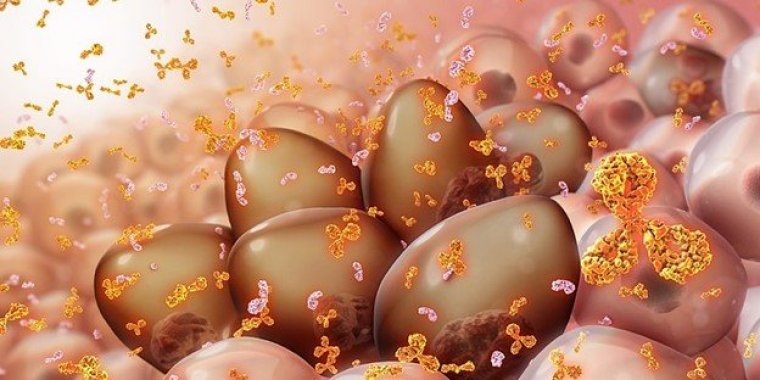| Health / Health News |
Study finds mutated protein structure at the root of blood cancers
Stanford University researchers working on a project supported in part by a U.S. National Science Foundation grant have determined the structure of a large signaling protein involved in responses to infection, inflammation and immune cell generation. The structure reveals how the protein, Janus kinase, or JAK, transmits signals sent by immune cell growth factors called cytokines.

Scientists find mutated protein structures in blood cancers; here, myeloma cells produce monoclonal proteins. Photo: Wikimedia Commons/www.scientificanimations.com
When the structure of the signaling protein changes because of genetic mutations it can indicate the emergence of blood cancers known as myeloproliferative neoplasms.
The research could impact development of drugs to treat myeloproliferative neoplasms, especially those that target proteins that allow the cancer to develop.
"The question of how JAKs transmit the cytokine signal has been a huge missing link in our understanding of cell signaling," said corresponding author Christopher Garcia.
"The structure also tells us how the mutant JAK works and how it leads to blood cancers. Our model of JAK structure gives us an atomic blueprint for how one could make mutant-selective medicines to treat these cancers."
When JAKs are brought close together, they activate one another. That's the complex that gets the signaling engine running, according to the scientists. The constant signals lead to unabated cell proliferation.
The findings could result in treatments that don't affect normal proteins and have less toxic side effects. The team is working to develop drugs to target other mutations involved in cytokine signaling. (National Science Foundation)
YOU MAY ALSO LIKE





